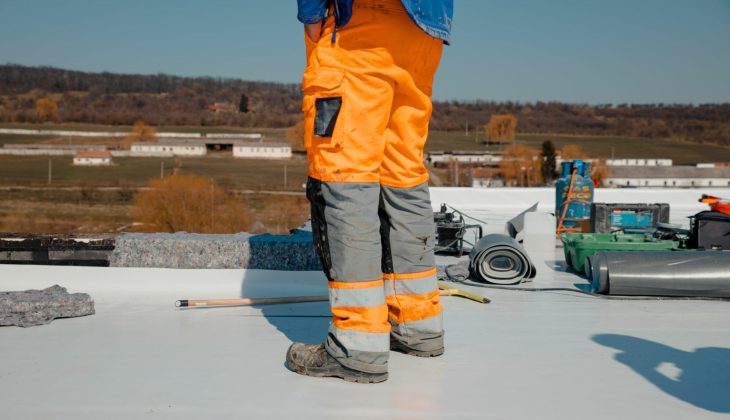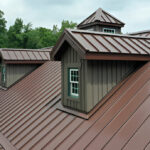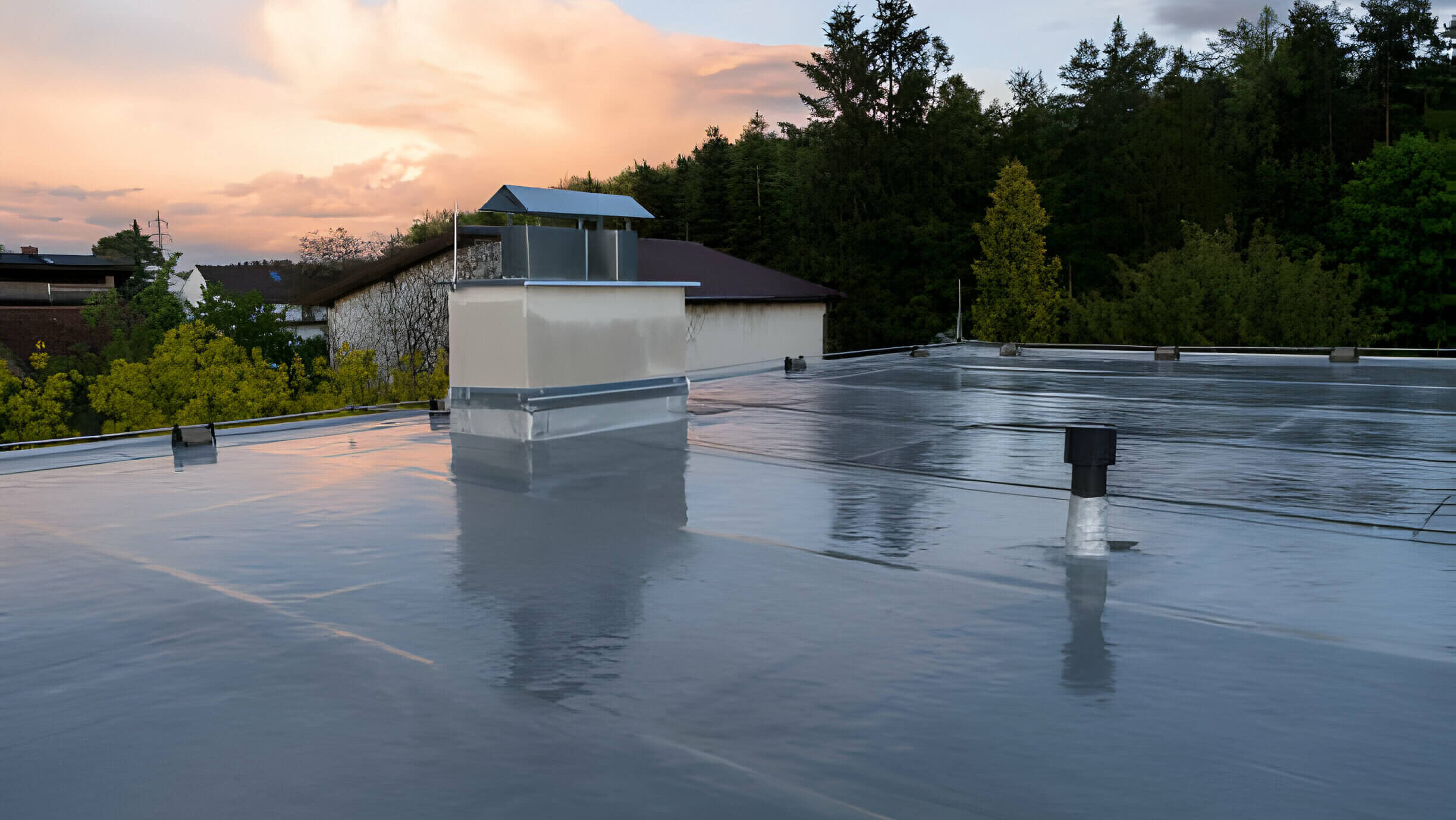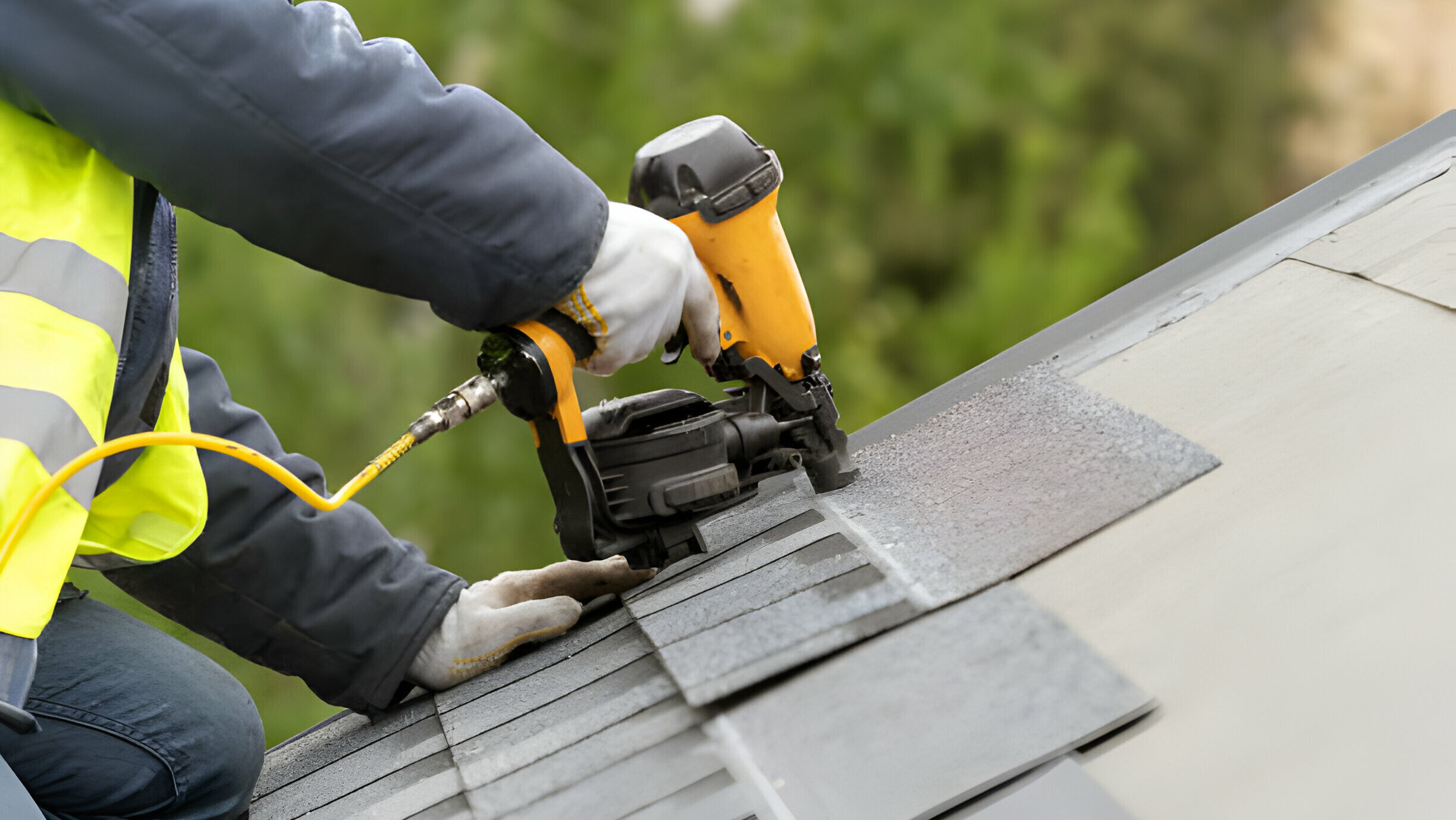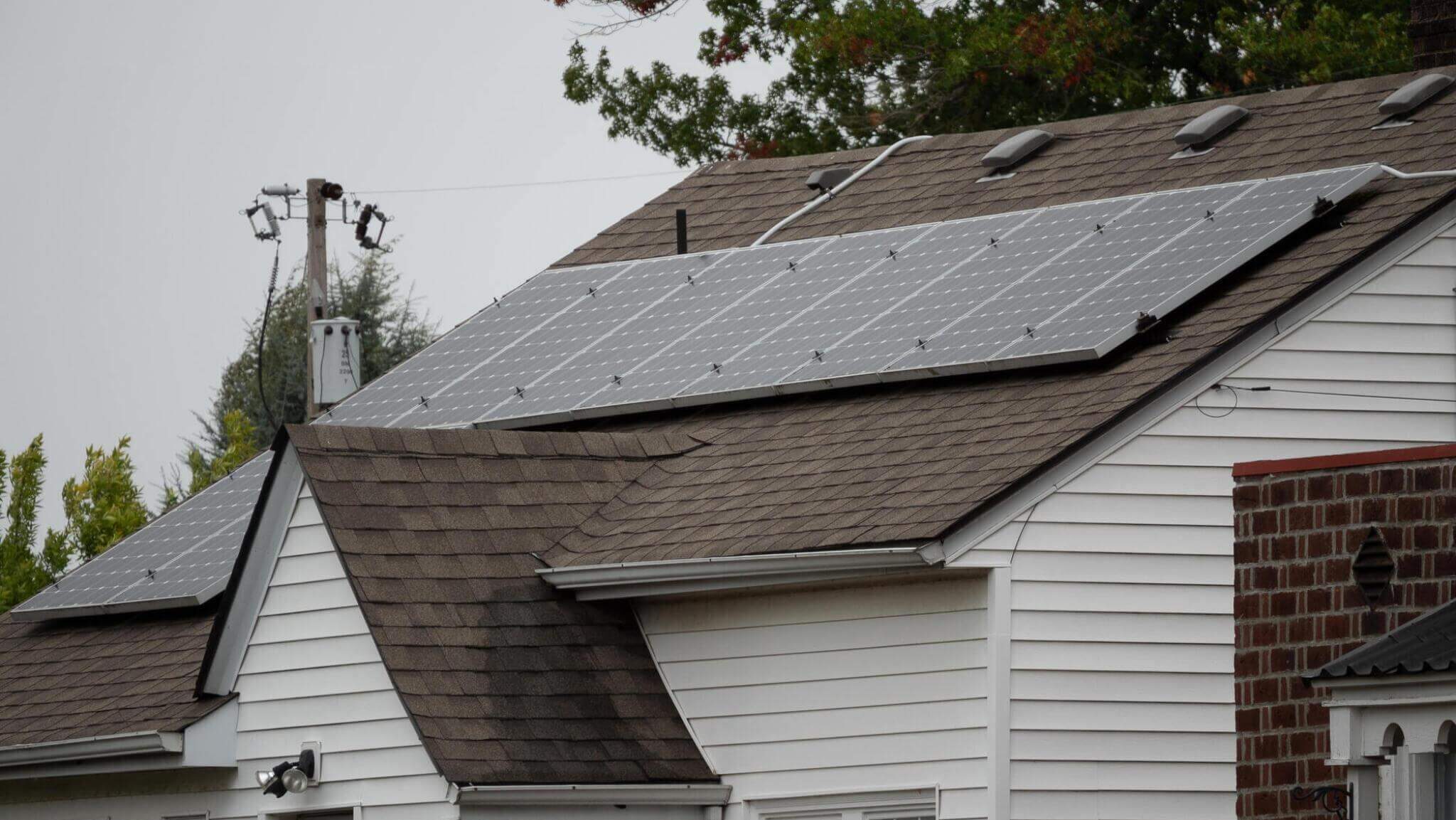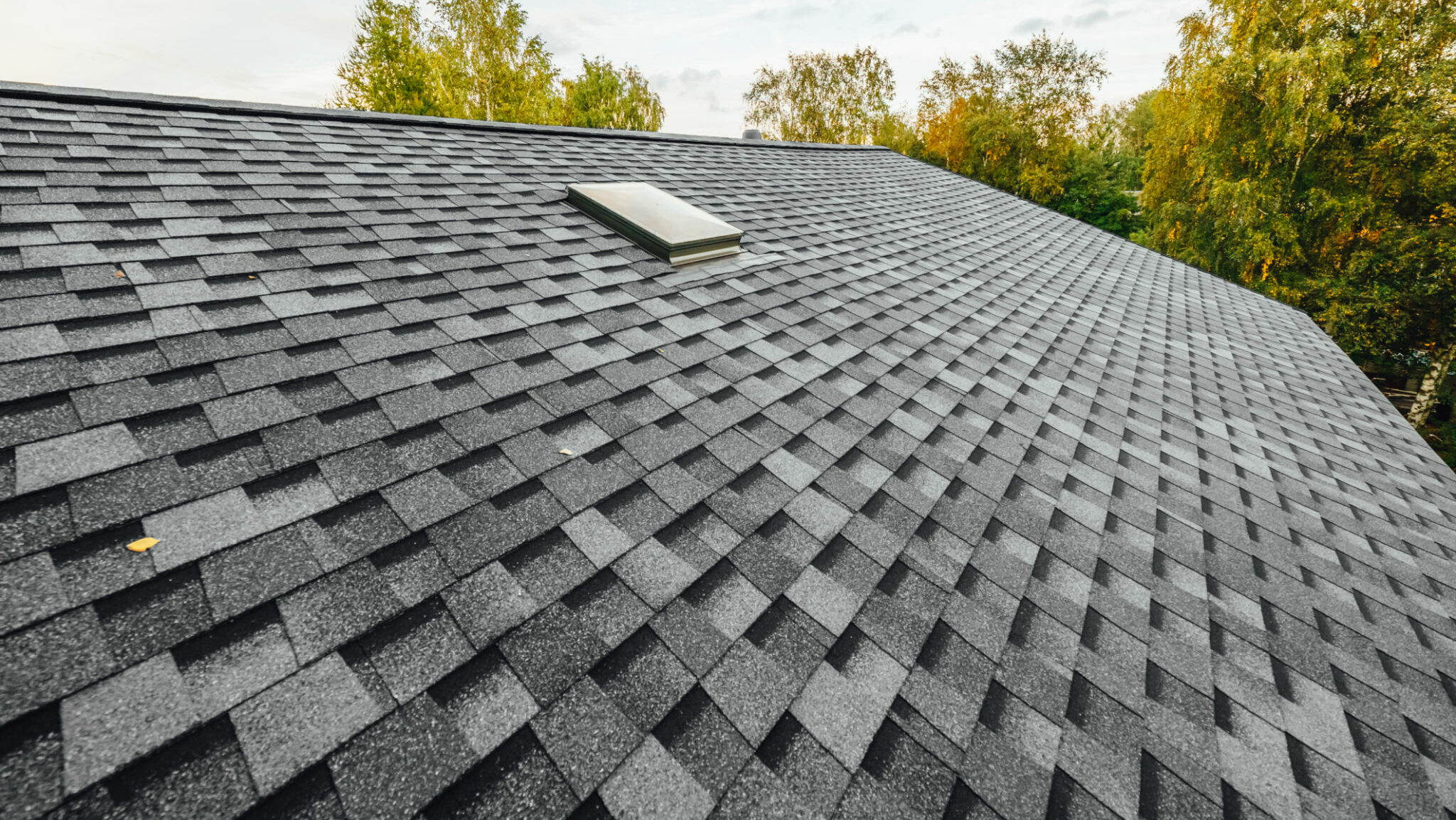A flat roof has either a 10-degree or lower slope or is entirely flat, requiring a complex choice of materials. Yeah, Asphalt shingles are not a wise choice, bud. So, what are the best roofing materials for flat roofs?
Table of Contents
ToggleConsidering factors like longevity and durability, EPDM and TPO are the top choices for flat roofs. However, conventional materials, such as built-up roofing, have been widely used.
Flat roofing materials should be replaced every 15-20 years. Keep reading to know why.
What Is The Best Flat Roof Material?
Due to their relatively higher pitch, sloped roofs shed water more quickly than flat roofs, which tend to hold water for longer.
This is why we need waterproofing for flat roofs and thus cannot use the typical slope roofing materials.
The standard Flat roof materials in the market today are concrete, PVC, EPDM, Built-Up Roof, and Modified bitumen.
However, Considering factors like longevity and durability, EPDM and TPO appear to be the top choices for flat roofs.
1. Modified Bitumen
Modified Bitumen is the fusion of traditional asphalt with modern polymer modifiers. They are extremely water resistant, durable, and flexible, making them an excellent choice for flat roofs. This material, along with different kinds of asphalt shingles, offers versatility in roofing options.
Modified Bitumen has a coarse surface that makes it resistant to UV rays and more adaptable to temperature fluctuations.
Modified bitumen roofs can last up to 20 years at least.
2. TPO Roofing
Thermoplastic Olefin roofing is a disposable membrane known for cost-effectiveness, energy efficiency, and durability.
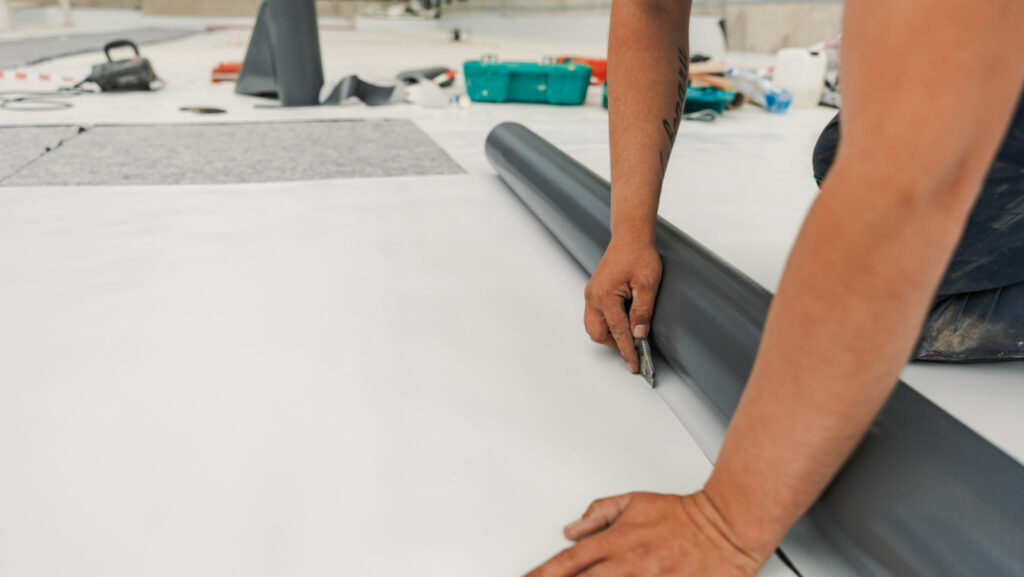
The installation methods of TPO roofs often include heat-welded seams, providing a watertight barrier against leaks and moisture.
Compared to Modified Bitumen roofing, TPO roofing can last significantly longer. You can expect 20-30 years maximum from a TPO roof.
3. EPDM Roofing
EPDM, a synthetic rubber membrane, is the best choice for flat roofs and is also a part of the range of common roofing materials. Why is that, you ask?
Due to its extended lifetime, excellent waterproofing abilities, and higher temperature flexibility.
An EPDM roof can last up to 50 years in all temperatures. This membrane is adhered to the roofing substrate, creating a seamless membrane.
4. PVC Roofing
PVC roofing accounts for approximately 20% of the commercial roofing market due to its outstanding fire and water resistance, energy efficiency in terms of cooling savings for homeowners, and longevity.
PVC roofs are made of plastic or polyvinyl chloride with less petroleum and oil than EPDM and TPO, which reduces their lifespan to 20 years maximum.
5. BUR
Built-up roofing is the most widely used roofing material for flat roofs.
It involves alternating layers of Bitumen and reinforcing fabrics to create a robust, multi-layered barrier against environmental elements.
A BU roof can last 20-30 years, making it an excellent choice for homeowners seeking a durable and practical roofing material on a low budget.
6. Standing Seam Metal Roof
Standing Seam Metal Roofing includes interlocking seams, providing a sleeker look and improved rigidity.

These metal roofs consist of vertical seams on both ends and are known to reduce cooling costs by 20%.
The average lifespan is 50 years.
7. Tile Roofing
roofing tiles account for approximately 10% of residential roofing installations yearly due to their greater longevity than any other flat roofing material.
Tile roofs offer water resistance and insulation benefits that can reduce heating and cooling costs for homeowners.
Tile roofs can last more than 50 years when installed properly.
Also Check: What is a composition shingle roof?
Factors To Consider When Choosing A Flat Roof Material
Choosing the suitable material for your flat roof is extremely important to ensure a safe investment. This choice depends on durability, cost, maintenance, and weatherability.
- Weather Condition
The most crucial factor to keep in mind is the weather conditions of the area where your property is located.
Materials with exceptional waterproofing abilities, like the EPDM, are suitable for rainy areas with more than 55 inches of annual rainfall.
However, if you reside in a sunny area, materials such as TPO are a great option due to their solar radiation reflection and cooling cost reduction.
- Cost
Some roofing materials, such as those used in standing seam vs. exposed fastener systems, can be expensive for no specific reason.
A little research is essential before deciding anything because sometimes you can find a fairer option with equivalent efficiency.
Here is a table showing the costs of different flat roofing materials.
| Flat Roofing Material | Cost per square foot |
|---|---|
| BUR | $0.70 ($70 per square) |
| Metal | $3-$25 |
| Tile roofing | $7-$28 |
| PVC | $7-$11 |
| EPDM | $3-$12 |
| TPO | $6-$9 |
- Durability
People need more willpower to replace the roofing materials less than it is due to time.
You need to find something more durable and capable of surviving the weather conditions in your locality to reduce the frequent repairs.
- Life Expectancy
If you want longevity and sustainability in your roof, options like BUR and Modified Bitumen roofing are not for you.
The roofing material for flat roofs with the most extended lifespan is tile roofing; It can last over 50 years. Other options include EPDM synthetic rubber payment.
Advantages Of Flat Roofs
Despite the adverse weather conditions, flat roofs are very “in” these days. Why is that?
Are they easier to maintain or more efficient than sloped roofs? Well, let’s go through the advantages of flat roofs.
- Yes, Maintenance becomes more accessible and cost-effective due to the easy accessibility for inspections and repairs.
- Flat roofs are way simpler than sloped roofs and require fewer manufacturing materials, making them less costly.
- Flat roofs are durable and environmentally friendly due to their high-performance multi-layered membranes.
- A flat roof enables you to benefit from natural energy sources like the sun. You can install solar panels for solar energy or have a skylight to lighten up your house. Solar panels can reduce your electricity bills significantly.
- You can also use flat rooftops for playing, sleeping, or other domestic activities, especially if you are low on space.
- Flat roofs are less complex compared to sloped roofs. They are flexibly designed, allowing modern aesthetics and integration with HVAC systems.
Best Roofing Materials For Flat Roofs FAQs
What are flat roofs made of?
Flat roofs can be made of concrete, modified bitumen, plastic, synthetic rubber, metal, TPO, EPDM, and green roofing.
Why Are Flat Roofing Materials Different?
Flat roofing materials differ from the typical sloped roofing materials because they are more water resistant than sloped ones. Sloped roofs shed water quicker than flat roofs.
Why do they put rocks on flat roofs?
Flat roofs are covered with rock granules to provide ultraviolet ray protection and make the material more durable.
Conclusion
In conclusion, choosing a roofing material for your flat roofs requires rational thinking.
You can choose from different options only after considering certain factors like weather conditions, the material’s lifespan and durability, etc.
Hope we were of help. Thank you.

